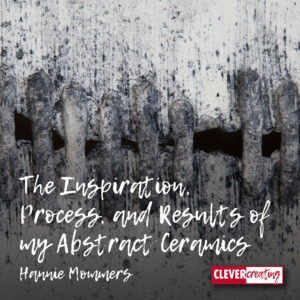
Until 2016 I was a ceramicist. Nowadays I still consider myself an artist but I no longer have a kiln and work in other materials and other forms of art.
My ceramics was focused mainly on sculptural and abstract forms.
On previous occasions, I wrote about my photography. And made several How-To-articles about ceramics, but here I want to introduce you to my abstract ceramics*.
* Abstract means it’s not recognizable as a real or figurative subject
Some of the links are affiliate links. As an affiliate associate, I earn a small commission when you purchase any of the products offered through the shared links at no extra cost to you. This helps me to maintain this website and I thank you for supporting me.
Table of Contents
Different points of view
Loving abstract ceramics and painting the most

My parents didn’t allow me – being 16 at that time – to go to the Academy of Visual Arts, so I took a diversion by going to the Academy of Visual Education instead, where I got a teacher’s degree and could still educate myself, and later others, in art.
My major back then was ceramics, my minor was 3D mixed media.
As soon as I lived on my own and had a job, I did what I wanted and attended evening classes at the Arts Academy, majoring in painting, thus ending up with two educations in fine arts.
This was a huge advantage because I became acquainted with different points of view regarding art.

The aim of art is to represent not the outward appearance of things, but their inward significance. ~Aristotle
Inspiration comes from others
Workshops for example
Because of my character and my schooling, I am very inquisitive. On a regular basis, I attended workshops on specific techniques and I loved to try out new things.
Several years ago the Danish Barbro Aberg came to Holland to lecture and I got really inspired by her technique of mixing clay with perlite.
The obtainable perlite in Holland is much different from the Danish kind, so my outcome differed from Aberg’s result, but it got me so enthusiastic that I worked a lot in the mix I learned to make then. I made some alterations of my own along the way to meet my needs.

Art is 5% inspiration and 95% transpiration
Different countries, various practices
I bought my perlite at a construction wholesale company and tried a number of experiments before making any objects with it.
The product that is available at some other stores is categorized in the garden section, so it might have a different function than mine.
Inspiration comes from the material
Varied techniques create different results
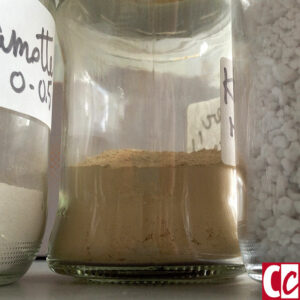
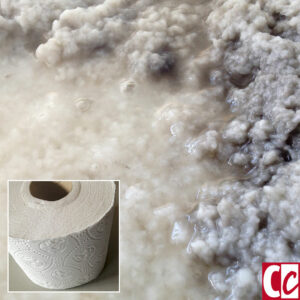
Perlite is used in the Netherlands as an isolation material in fireplaces between the mantelpiece and the chimney pipe. According to Barbro, it has a way finer structure in Denmark. The kind I had was pretty rough.

The proportions that I used:
- 2 units of paper fibres (toilet paper);
- 8 units of ball clay;
- 4 units of perlite;
- 3 units of grog;
- 4 units of water (although this may vary, depending on how wet the paper fibres are).
My method:
- Mix toilet paper with a lot of water and let it rest for a day or two;
- Pour out the excess water;
- Crush the fibres with a mixer;
- Mix the ingredients;
- Blend the mix gradually;
- Spread it on a plaster plate;
- When it’s dry enough, knead it thoroughly by hand.
What I loved most about my own mixture was the beautiful skin it gave to the clay, which I emphasized by washing the work with a thin, coloured engobe after the first firing.
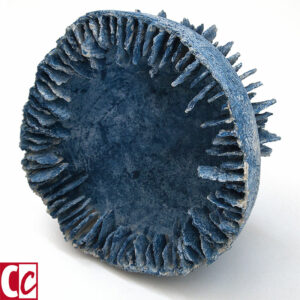

Inspiration comes out of the blue
A thoughtless remark set off a new series
Years ago I was exhibiting my work in Belgium and friends came by to watch. At the time I created a set of sculptures based on geometric forms and one of my friends thought it resembled crashed aeroplanes.
His remark triggered ideas about engines, blades and rotors. A lot of sketching was followed by a visit to the Aviodrome, a theme park about aeroplanes, where I was generously allowed to take lots of pictures.

Inspiration from one work to the next
Working in series
I usually worked in series. Sometimes working on one sculptural form led to the next because I couldn’t quite achieve what I had in mind. Or I got new ideas about the next one during the process. Sketching led to several different ideas as well.
The series were for example:
- Chimney;
- Holding On;
- LisaSphere.
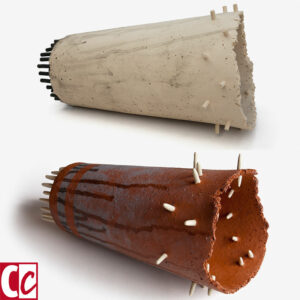
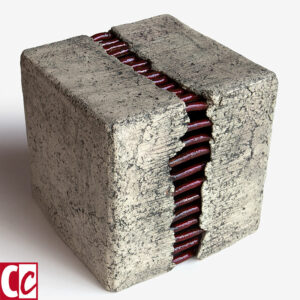
Safety first
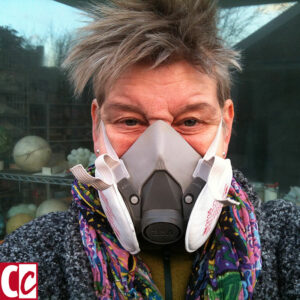
Whenever I mixed dry powders or when I made my slips with oxides of heavy metals I had a mask firmly on my face.
Each substance that is burned can contain toxins, so I didn’t enter my workplace when the kiln was on and I kept the outside door of my atelier open during the process.
Better safe than sorry!
Later addition: some of the materials used in a ceramics workplace made me more and more uncomfortable over time. Especially when 2 of my fellow ceramicists died. This is one of the reasons I quit being a ceramicist in 2016.
All pictures and works of art © Hannie Mommers


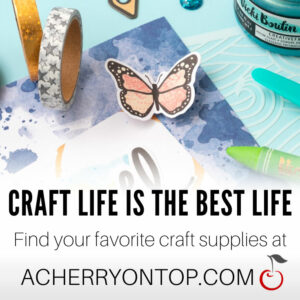
Pretty cool article, it’s nice to hear the backstory and the inspiration for work going forward.
You mentioned you stopped in 2016, I’m surprised as it seems you have a passion for this.
Are you planning to start back up? What mediums do you focus on now mostly for your art?
Hi Lee, one of the reasons I stopped was I wasn’t happy anymore with the contamination of the heavy metals I was causing. The other reason, equally important, was that I was planning to emigrate back then. Which I have done in 2018.
I am not sure I want to start again. If I would I wouldn’t invest a lot of money anymore in owning my own stuff but look for a place in the village to get my work fired. Professional potteries have way better resources to filter the outlet of a kiln.
At the moment I focus on natural materials and botanical paints. And I make collages from waste to give it a second life. Being sustainable is nowadays just as important to me as being artistic. 🙂
Thanks for commenting, Lee, and keep on enjoying art.
Hannie, very interesting background information here about your education and your development in the Arts. I really enjoyed reading it. I guess we all have our talents and our specific interests that are unique to us. I have made peace with the fact that I can only draw a stickman lol. Or maybe a stick dog haha. Luckily, like we all, I have talents in other areas 🙂
When reading I can see that you are very passionate about your subject matter and it is wonderful that you are able to pursue that what you enjoy in your daily life. I am looking forward to seeing your next Art project in the making.
Hi Schalk, thanks so much for the compliment. Always great to hear from someone who is admiring my work!
I am sure you could do more than draw a stick figure. But, as with everything, we only learn what we give attention to and time. And if your interests are somewhere else, it’s the right decision for you to focus on that. 🙂
Keep on pursuing your own dreams and thanks for commenting.
I love art and ceramics and all the different kinds of inspiration people get for creating their masterpieces. I think your personal inspiration is very intriguing. If you could do one huge ceramics project without limitations, what kind of project would you do and why would you do it?I’m curious because there seems to be so many different ways you could go about a piece of art.
Such an intriguing question, Logan, and not that simple to answer. What I would love to do is a joint work of art, I think. For instance, a “statue” in the urbanisation I live together with as many neighbours as possible. This would serve as a gathering place for both young and old people, and would promote togetherness and do justice to all the different nationalities and cultures that live here.
I put “statue” in quotes because it has to take up space. So I don’t mean a statue of a person. It would be more of a pavilion-like thing.
Awesome! Thank you, Logan, you really set something in motion. 🙂
Inspirerende techniek en mooie objecten!
Dank je wel, Martijn. Ik zie op jouw website dat jij ook prachtige dingen maakt!